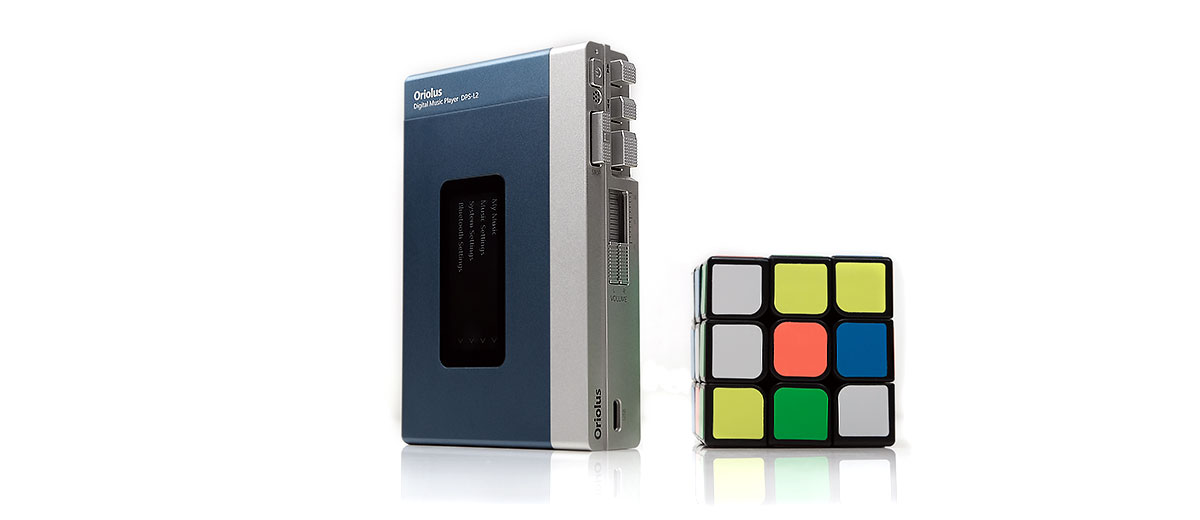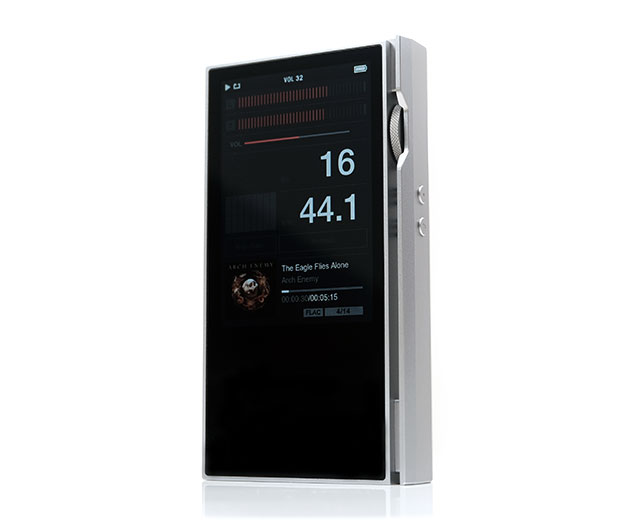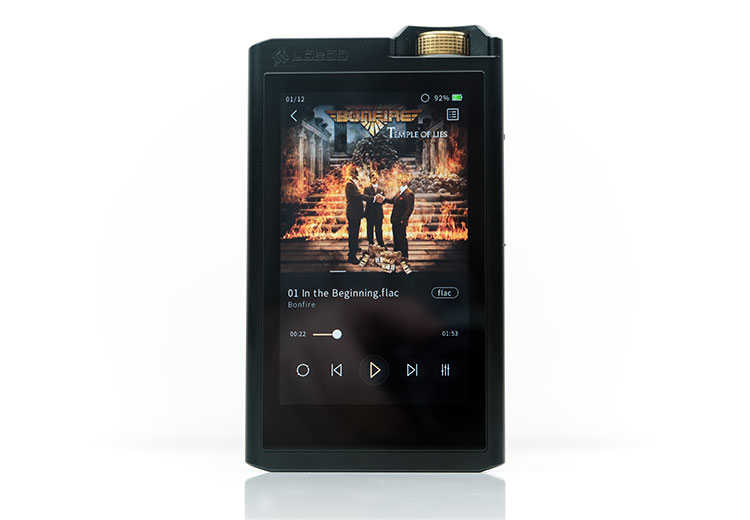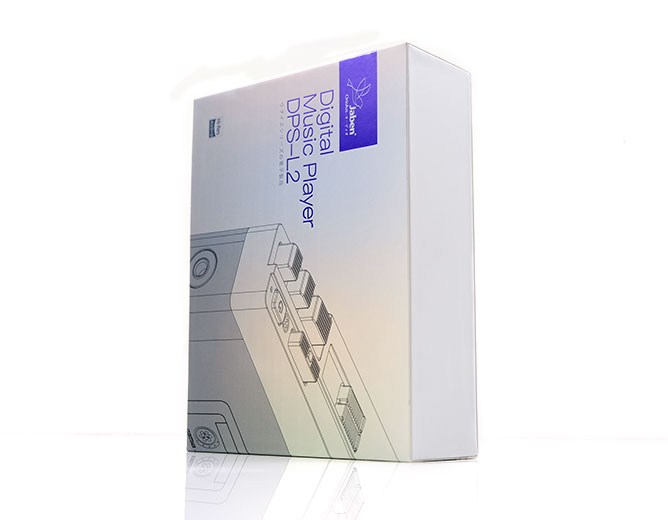Select Comparisons
All comparisons were completed with a 64 Audio u18s and a Vision Ears Elysium in both SE and balanced output mode.
Luxury & Precision P6
$2999
Although the P6 is priced a little higher the look back to a different era for some of its technology combined with its non-touch experience makes it a relatively good comparison.
Technical
Inside, the P6 uses a discreet engineered R2R DAC rather than the delta-sigma ES9038PRO inside the DPS-L2. Decoding on both is not top-tier but still quite competitive with both offering a maximum of 32BIT/384kHz PCM and up to DSD256 native decoding.
Output power does differ with the P6 able to deliver more balanced power with an output rating of 700mW into a 32Ω load compared to 360mW from the DSP-L2. Unbalanced is lower though at 180mW into 32Ω compared to 400mW from the two SE outputs on the DSP-L2.
The DSP-L2 does not offer any SPDIF or LO options which the P6 can do, however, the DSP-L2 can offer OTG digital audio out and flash memory expansion which is not available on the P6.
Bluetooth is more up-to-date on the P6 with BT5.0 and LDAC receiving capability. The DPS-L2 can only receive in SBC and a grade lower with BT4.0 but it can transmit to connected streaming devices such as a desktop DAC which is missing on the P6.
The DPS-L2 is missing onboard memory compared to the 64GB on the P6. Granted you can expand via OTG on the DPS-L2 but it’s a bit of a miss out of the box.
Design
The P6 follows a more traditional understanding of how a modern DAP should look. That means the more uniform minimalist rectangular form factor is finished in a beautiful, brushed-silver aviation-grade, aluminum shell with a smaller blended 3.5″ IPS screen to the front, and buttons/dial to the sides.
The DPS-L2, on the other hand, is just unique, wow, different, cool, and a real eye-catcher. Both have top-notch engineering behind the designs but the Oriolus take on the original Walkman is going to get everyone’s attention.
If I ignore that, which is rather hard to do, then the P6 does have some pros over the DPS-L2 such as the better color screen, the more pocketable dimensions, and not being as weighty. Some people might also find the traditional rotary volume pot on the P6 easier to manage and more accurate than the dual potentiometer on the DPS-L2.
Despite both having physical controls, the DPS-L2 is the easier of the two for navigating the OS using the discreet buttons to the side of the small screen. I find the P6 left and right panel controls awkward and slower to use. The retro playback mechanical buttons on the DPS-L2 actually make button-mashing surprisingly fun.
Software
Oriolus use the HiBy Music OS and Luxury & Precision uses their own presumably Linux-based software. Both, however, have a very similar feel to them with line-entry workflow, linear navigation, and plenty of button mashing. They are generally quite fast and stable but not as aesthetically pleasing as Android platforms or even HiBy’s new touch-capable OS.
The DSP-L2 experience is helped by the discreet buttons on either side of the IPS panel whereas the depth of the P6 OS is a bit better with more options such as a wider range of digital filters, LO switch, USB audio delay, and the ability to customize key functionality.
The major feather in the DPS-L2 cap is the addition of HiByLink BT functionality as well as a superior EQ system with more customization and presets. Also, big brownie points for the interactive cassette screensaver which compliments the whole Walkman theme of the DPS-L2.
Performance
It is R2R versus delta-sigma and you should be able to pick out the differences between this two fairly easily. On the U18s, the DPS-L2 comes across as a little more neutral in terms of imaging and body, and overall, the cleaner sounding timbre of the two DAPs.
The P6 is creamier sounding with additional warmth and texture from the bass through to the mids. You get less of a treble twist infused into the P6 midrange timbre but at the same time it never sounds rolled off or dark, merely relaxed in top-end forwardness.
The DPS-L2, on the other hand, has a bit more of that Sabre trait in the treble and it’s a factor in the midrange timbre with the U18s. It is not sharp per se but you can hear a little more natural sibilant emphasis in the vocal note attacks whereas the P6 is more liquid in its delivery and slightly softer.
Staging is more about depth and width from the P6 and a linear staging quality to the DPS-L2 with slightly more treble bias. The sharp decay filter on the DPS-L2 will enhance instrumental separation a bit better than the slow decay but both sound a bit drier than the long analog-like quality of the P6.
Bear in mind, I don’t think the DPS-L2 is sharp, overly dry, or bright. In fact, it is quite a natural sound. Rather, the P6 is possibly one of the most analog-like tunings out there.
Lotoo PAW Gold Touch
$2799 (current pricing)
The Touch is still Lotoo’s flagship DAP in 2021 and like the P6 priced a little higher but with its proprietary OS it does stand out a bit from the Android crowd much like the DPS-L2.
DAC
Internally, the Touch uses a single AK4497EQ implementation as opposed to the ES9038PRO inside the DPS-L2. The AK4497EQ is a slightly lower level chipset with the AK4499EQ the ES9038PRO equivalent.
However, decoding on the Touch is a bit better at DSD125 and PCM 32BIT/768kHz compared to DSD256 and PCM 32BIT/384kHz on the DPS-L2.
I suspect some limitations in the DPS-L2 are down to the CPU implementation combined with the XMOS USB chipset being used. Lotoo makes a great play on their triple processor setup to maximize performance.
Both do use an Ingenic x1000 but for the Touch, it is only for the wireless subsystem. Lotoo has added a Freescale i.MX6 processor for its digital subsystem and an Analog Devices Blackfin DF7XX DSP for the audio subsystem which allows it a bit more processing power.
Amp
For power, the Lotoo and the DPS-L2 do not quite follow SE and balanced normative thinking. Neither has a balanced output that is more powerful than the SE alternative. The Touch offers 500Mw per channel into a 32Ω load for both SE and balanced whereas the DPS-L2 balanced output is a little lower at 360mW compared to 400mW going SE.
Technical
Both use a BT4.X version for Bluetooth which is a bit behind the times, however, the Touch is LDAC capable whereas the DPS-L2 is only up to aptX transmission.
Neither DAP uses onboard storage memory but the DPS-L2 can use OTG expansion and regular MicroSD cards whereas the Touch uses a more widely regular SD card implementation with not OTG storage capability. Battery life is similar at about 10-11 hours and they do both have 5500mAh batteries inside.
Design
The two have very different aesthetics but oddly enough one is a direct ‘copy’ of a Sony audio player and the other, the Lotoo pays homage in a way to modern Sony DAPs. Its sleek black rectangular design, inset rounded physical control buttons and ‘Sony-like” OS aesthetics is very reminiscent of the modern Sony 1A or a nod to the older ZX2.
The DPS-L2 on the other hand is an outright double-take on the TPS-L2 on everything from the form factor, mechanical buttons, cassette bay lid, and Hot Line. The only differences are the better aluminum build and slightly smaller dimensions.
The touchscreen of the Lotoo is a big bonus. I will not deny that touch is so much easier and faster to navigate with compared to physical buttons. However, the retro TPS-L2 style mechanical buttons evoke a stronger emotional response and are simply a lot more fun if you bought the DPS-L2 for that retro design.
As with the P6, some will prefer the more precise potentiometer dial of the Lotoo over the dual potentiometer sliders of the DPS-L2 though the ability to channel adjust via analog sliders is a nice feature. You are either into this retro Sony vibe or you are not at this point.
Software
Neither are Android but the Lotoo OS is deeper, more user-friendly with a color IPS touchscreen and better graphical UI. The DPS-L2 HiBy Music OS is stable, very bug-free and boots quickly and efficiently. However, it missing a lot compared to the Lotoo OS with features like lineout controls, PMEQ, and a wide selection of DSP filters.
I do rate the BT functionality better on the DPS-L2 with HiByLink thrown in but neither are that great in terms of stability with range compared to competing Android DAPs. Both OS offer USB-DAC out but I find the Lotoo to be the better performer for DSD, (as in it works beyond 24BIT/96k), when hooked to my laptop.
Performance
The Touch seems to be the flatter of the two presentations with a smoother transition from lows to mids and highs and thus a more reference-like quality to its sound. The DPS-L2 has some variation that gives it a more dynamic tone with a bit more low-end weight and bloom and an enhanced treble presence.
In turn, that that gives the DPS-L2 mids timbre a bit of a mix with more contrast on the notes making it sound a bit more lively and cleaner. The Touch stays more or less in the natural to neutral sounding territory but its midrange timbre is slightly more rounded, smoother, and with less contrast. Again, a reference timbre if ever I heard one.
I must say I do prefer the slam and weight of the DPS-L2 low-end over the Lotoo which is much more controlled. The definition of the Lotoo bass performance might be better overall but the additional presence on the DPS-L2 low-end makes for a more engaging delivery.
For vocals, I might take the Touch with its better control on sibilance and more natural percussion timbre on the upper mids. Granted, I find the DPS-L2 livelier in the mids than the Lotoo but it can just squeak a bit more for sibilance when pushed hard enough.
Treble is slightly less pronounced on the Lotoo but it is still very articulate with excellent headroom on the Elysium and U18s. If you prefer more treble energy and certainly with the U18s I do like it like that then the DPS-L2 is the better bet here.
HiBy R8
$1899
We are close on price point with the R8 and given it’s about as advanced as it gets for Android at this price point so a noteworthy alternative.
Technical
Inside, the R8 uses a dual AK4497EQ combined with a fast Snapdragon 660 CPU and 4GB of RAM. The DSP-L2 uses an ES9038PRO which I rate higher than the AK4497EQ but only in a single chipset implementation. It also uses an Ingenics SoC X1000 CPU so that amount of RAM is not really necessary given Android is more demanding but this is a far more limited CPU.
Decoding, as you would expect, is higher and more extensive on the R8 with a top-tier MQA 16X, DSD512, and 32bit/768kHz PCM decoding capability compared to the DPS-L2’s more modest DSD256, 32BIT/384kHz, and no MQA.
The R8’s USB-DAC decoding also seems to be much higher than the DPS-L2’s 24BIT/96kHz PCM which was as high as I could get it to play audio with Windows 10’s 2.0 drivers.
In terms of amping, the R8 is much more powerful offering up to 1W into a 32Ω load on its balanced output in turbo mode whereas the DPS-L2 is a more modest 400mW on the same load from its SE and lower at 360mW from its balanced alternative. The R8 also offers both SE and balanced lineouts whereas the DPS-L2 offers no lineout option.
However, the DPS-L2’s noise floor is lower with an SNR of 119dB balanced compared to 117dB from the R8 equivalent which you could argue is a result of not pushing the opamp too hard.
Given its an Android platform the R8 connectivity is much more comprehensive with BT5.0 and WiFi for DLNA/Airplay whereas the DPS-L2 only offers BT4.0 bi-directional. Both DAPs offer HiByLink also.
Design
On the one side, the R8 is the quintessential Android DAP with that classic black slab and beautiful 5.5″ touch-capable 1080p IPS screen. On the other side, the DPS-L2 is the ultimate hybrid homage to a bygone era with its classic Walkman design, mechanical buttons mixed with a discreetly placed 2.5″ IPS non-touch screen.
The contrast is stark with the R8 by far the easier to use by modern standards given Android is so ingrained with its apps structure and touch-orientated OS. And yet, the design flow of the DPS-L2 is more engaging with more to push, flip and click. There will be fans of both I can assure you.
Mind you, the R8 is by far the bigger and heavier of the two DAPs at 446g compared to 305g so it is not the easiest to work one-handed. However, the classic Walkman flip lid and button-orientated OS will force you to use both hands for navigation.
Both also use Alps potentiometers but like the other compared DAPs, the R8 rotary action will be more boring to look at but easier to use compared to the dual L/R slider on the DPS-L2.
Both have microSD slots though the HiBy R8 also packs in 64Gb of memory whereas the DPS-L2 has none. The quick-charging battery is also massive inside the R8 at 10000mAh compared to slower to charge 5500maH inside the DPS-L2.
HiBy does not supply official specs but the R8 battery cycle is not huge compared to the DPS-L2’s performance, maybe about 1-2 hours more depending on how you use it.
Software
There is really no competition here. If you want the latest and greatest touch-capable DAP OS then the Android 9 on the R8 is it. The DPS-L2 basic HiBy Music OS is faster, probably more stable, and not as battery intensive but its non-touch operation and the very basic line-entry system are light years behind.
You get WiFi, BT5.0, lots of apps to download, MQA unfolding for TIDAL integration, and a smooth navigation system. It is built for the modern audiophile’s needs. The DPS-L2 is really a local music file management system with a nod to modernity via its BT4.0 bi-directional support.
In an odd way, the DPS-L2’s OS represents where HiBy was about 3-4 years ago since it is a HiBY OS and the R8 is where HiBy themselves are right not in terms of software development.
Performance
The R8, for me, is a good example of the AK4497EQ sound with just a little twist on the HF tuning. Compared to the DPS-L2 it has a little more warmth and body on the low-end and slightly softer and more liquid through the mids timbre.
The DPS-L2 is more neutral in its bass and mids timbre, with a slightly shorter decay also so separation is somewhat better for me, particularly through the mids. The bass is tighter and punchier also though not carrying quite the same warmth and weight as the R8 on the very low-end.
Treble is interesting as the DPS-L2 is definitely the more neutral of the two with our two tested monitors for HF presence but notes have more physicality whereas the R8 can sound brittle.
The R8 has this little upper treble tweak that creeps into the lower-treble and upper mids that sometimes sounds a bit off. It is like a tiny narrowband peak that slightly upsets the harmonic balance in that register making notes sound thinner also. A minor harmonic dissonance if you will. Other than that, or lower down, it is quite a bit smoother and richer.
The DPS-L2 generally has a more coherent treble and upper mids tone in comparison to the R8. The high-frequency notes are clear and more substantive in terms of body with a better harmonic balance.
Our Verdict
The Oriolus DPS-L2 is probably the most unique DAP out there in the market today. It will certainly tug on the strings of those who look back fondly on the analog era or for the younger audience who want something with a retro panache in its styling.
It does not just look like an old Walkman, aspects of the DPS-L2 build works just as you might think it should if it was a genuine cassette player. Those mechanical buttons are real, the click is satisfyingly ‘clicky’ and they do what they are supposed to do. It is an absolute blast to use and not a single emergency pencil is required to keep the music rolling.
All that would be for nothing without the sound and on that point, it’s competitive with similarly priced DAPs. The digital filters play a bigger role than you would expect ranging from punchy and vivid sounding to slightly more laid back and smoother depending on the one you prefer.
Drawbacks? Well, it’s not a touchscreen Android DAP, it has limited connectivity and the Bluetooth is quite weak. There is no onboard memory either and the power is a bit on the low side for demanding headphones to pair well with. Monitors do much better which is where this limited-edition DAP seems best suited.
Overall, a DAP not without flaws and some frustrations for those who are used to modern touch-sensitive designs. However, as a retro-styled spin on the classic Walkman cassette player, the DPS-L2 is absorbing, a lot of fun to an old-timer like me, and a talking point among crowds to say the least.
Oriolus DPS-L2 Specifications
- Display: 2.4-inch high-definition IPS screen
- Size: 118mm x 76mm x 25mm
- Weight: Around 305g
- Battery capacity: 5000mAh,high-density polymer lithium battery
- Charging port: Type-C
- Output: 3.5mm single-end x 2; 4.4mm balanced-end x 1
- TF Card: Maximum support 512GB
Music Format
- Support hard decoding DSD64/128/256 (DSF/FF/ISO)
- Support DXD format up to 384kHz/32Bit
- Support lossless formats FLAC, APE, WAV, ALAC, AIFF, up to 384kHz/32Bit
- Support formats MP3, WMA, AAC, etc.
- Support CUE, M3U, M3U8 files
- DAC Chip: ES9038 Pro
- Op-amp chip: 0PA1612
- Frequency response: 17Hz 20kHz +/-0.1dB
- THD: 0.0015%
- SNR: 117dBA (single-ended), 119dBA (balanced)
- Resolution: 78dB (single-ended), 105dB (balanced)
(The indicators are all tested under 32ohm load)
PO Output Specifications
- Single Ended Output (3.5mm)
- Output power: 400mW (32Ω load)
- Frequency response: 20Hz ~ 20KHz (± 0.15dB)
- Signal to noise ratio: ≥117 dB
- Resolution:> 78 dB
- Distortion + Noise: 0.0015% (32Ω @ 1KHz)
- Balanced Headphone Output (4.4mm)
- Output power: 360mW (32Ω load)
- Frequency response: 20Hz ~ 20KHz (± 0.15dB)
- Signal to noise ratio: ≥ 119dB
- Resolution:> 105 dB
- Distortion + Noise: 0.0015% (32Ω @ 1KHz)
Function Support
- 10-segment custom FQ adjustment, Hibylink. Car mode, USB DAC, USBOTG
- 1Two-way USB transmission, two-way Bluetooth 4.0 transmission, HOTLINE mute, two-level gain output.








